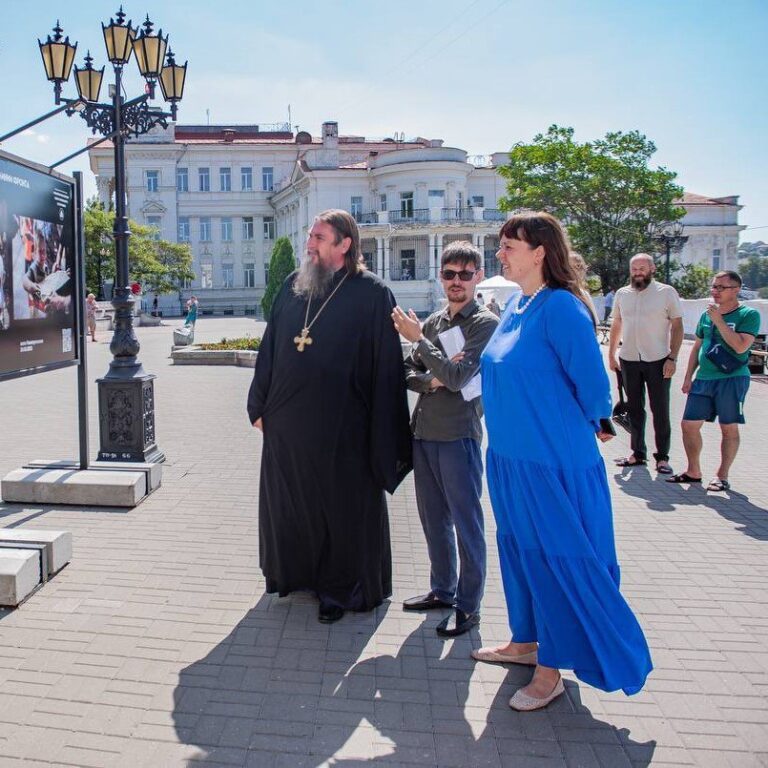The next anniversary of the start of the Soviet-Nazi war was not without provocations organized in occupied Crimea by the aggressor’s special services for the “publication of archival documents.”
They became an obvious continuation of the May story, when the key resource of the aggressor’s propaganda, namely “Tass” decided to “delight the readers” with some “news” that the criminal “FSB department for Crimea and Sevastopol” allegedly “declassified … interrogation protocols .. Jäneke, who commanded the Wehrmacht troops in Crimea,” actually for one purpose – to “remind” about the “Crimean Tatar traitors” during the Second World War.
Now, and obviously by the same “historians,” it is stated that the “Crimean FSB department” transferred certain “documents” “to the state archive, the state council of the republic of Crimea and to the Vernadsky Crimean federal university,” while the propaganda emphasizes that “ data on the Nazi killings of children in Crimea” and other “monstrous crimes” has been declassified.
From the currently posted pages of materials from Soviet investigative cases of the 50-70s of the last century, however, there is nothing new about the Nazi crimes against humanity themselves committed in Crimea. Much more detailed and reliable materials about this, comparable to those now “declassified,” were published thirty years ago.
Now, in a selection of pages published by the aggressor’s propagandists, it is obvious that the main thing for “lovers of historical truth” is to mention the participation in crimes, along with the police, of “Tatar volunteers.”
At the same time, the names of the actual police collaborators and interrogated persons, which clearly do not correspond to this approach, are simply bashfully blotted out in the materials.
Naturally, such “anonymized” documents from the “Crimean FSB”, which mixed historical events, fantasies and the “creative approach” of Soviet investigators, cannot be refuted.
But, without detracting from Nazi atrocities, we note that, for example, the mass extermination of the population in 1943-1944 precisely by drowning in barges, described in the “new documents,” is at least doubtful, given the extreme value for the occupiers of that (and even today) period of any available they have sea transport on the move.
In addition, in the same “Jäneke case” materials were made public not about the drowning of the population of Crimea by barges, but about their deportation by the Germans to Romania, for which the Soviet authorities subsequently persecuted Romanian figures, and which has numerous documentary evidence.
Also worthy of special mention is the published interrogation of a certain resident of Simferopol’s Novosergeevka, who allegedly lived there in the management house of the “Krasny Perekop” collective farm, that in 1941 a certain German officer there at one time cohabited with a local Jewish woman, who was later hanged, and that this local resident himself then, having somehow moved in time and space, “he ended up among the Soviet sailors and, at their request, showed them the way to Yevpatoria.”
Without dwelling on what would actually await a German officer in 1941 for any sexual relations with Jews persecuted by the Nazis, we will only mention that the collective farm “Krasny Perekop”, as, however, follows from its name, was then not under Simferopol, and with the managemen in the village of Pochetnoe (Tuzla), actually in Perekop.
Also, this “time traveler” could show the “road to Yevpatoria” to the Red Navy only if he knew how to walk on water – as is well known, the operation described in the interrogation with “the destruction of the German commandant’s office in Yevpatoria” was a landing from Sevastopol. Why, in principle, would military sailors, who knew the entire Crimean coast and its harbors well, need such “advisers”, and not from Yevpatoria, is a rhetorical question, to put it mildly.
It is obvious that the current provocation has nothing to do with historical truth and pursues one simple criminal goal of the aggressor’s propaganda – further incitement of interethnic hatred in the occupied Crimea and another “justification” of the genocide of the Crimean Tatar people. What other semi-fictional materials about the “Crimean Tatar traitors” will be published in the “Crimean FSB” next – one can only guess.









